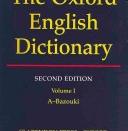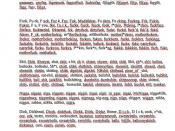TEACHING ENGLISH THROUGH TRANSLATION
Principio del formulario
The authors of this subject argue that translation is a valid tool for instruction. Present arguments for and against the use of translation in your own specific teaching situation or in an imagined teaching situation. (Before arguing, explain clearly what this situation is).
Student response
The authors of this subject argue that translation is a valid tool for instruction. Present arguments for and against the use of translation in your own specific teaching situation or in an imagined teaching situation (before arguing, explain clearly what this situation is).
There are numerous ways of conveying the meaning of an unknown word. These include a definition in the second language, a demonstration, a picture or a diagram, a real object, L2 context clues, or an L1 translation. In terms of the accuracy of conveying meaning, none of these ways is intrinsically better than any of the others.
It all depends on the particular word concerned. However, studies comparing the effectiveness of various methods for learning always come up with the result that L1 translation is the most effective. This is probably because L1 translations are usually clear, short and familiar, qualities which are very important in effective definitions.
Once learners of English have achieved some basic skill in English, they will begin to learn from sources outside the classroom. Students will either come across or actively seek out English in its written and spoken forms. Any teacher will want to encourage this and reward students for what they learn outside the classroom. The students`desire to hear and read English will be recognized as a sign of commitment.
But all teachers need to give some thought to the kinds of English their students may bring back to the classroom, and need to anticipate some of the...


